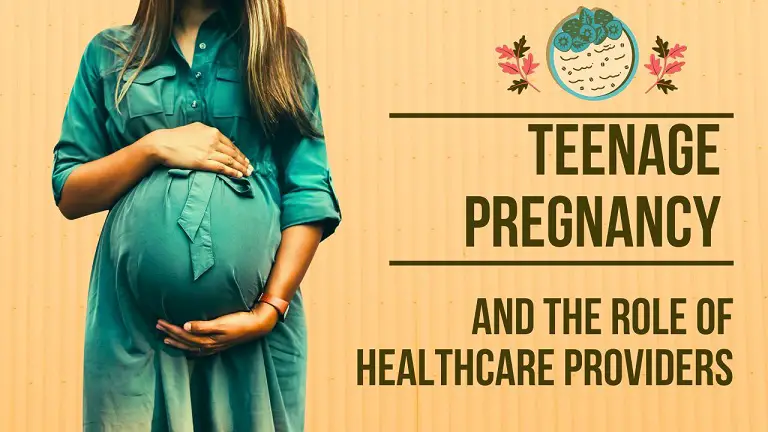Contents
Teenage Pregnancy and the Role of Healthcare Providers
Teenage pregnancy remains a significant public health concern globally, with far-reaching consequences for the mother, child, and society.
Healthcare providers are pivotal in preventing, managing, and supporting adolescents through this critical life stage.
This article explores the multifaceted responsibilities of healthcare professionals in addressing teenage pregnancy and promoting the well-being of young mothers and their children.
Understanding the Scope of the Issue
Teenage pregnancy rates vary across countries and regions, but the impact on individuals and communities is profound. According to the World Health Organization (WHO), approximately 16 million girls aged 15 to 19 give birth each year, with the vast majority occurring in low- and middle-income countries.
Teenage pregnancy is associated with various health risks, including complications during pregnancy and childbirth, increased risk of postpartum depression, and higher rates of premature birth and low birth weight.
Beyond the physical consequences, teenage pregnancy often leads to disruptions in education, limited career opportunities, and increased economic hardship.
Additionally, children born to adolescent mothers are more likely to experience developmental delays and face challenges in their overall well-being.
The Role of Healthcare Providers
Healthcare providers, including doctors, nurses, midwives, and other allied health professionals, are uniquely positioned to address the multifaceted challenges of teenage pregnancy.
Their roles span various domains, from prevention and education to comprehensive care and support.
Prevention and Education One of the primary roles of healthcare providers is to prioritize prevention efforts through comprehensive sexual and reproductive health education.
This includes providing age-appropriate information on contraceptive methods, healthy relationships, consent, and the potential consequences of unprotected sexual activity.
By equipping adolescents with accurate knowledge and fostering open dialogue, healthcare providers can empower them to make informed decisions and reduce the risk of unintended pregnancies.
Early Identification and Prenatal Care When pregnancy does occur, early identification and prompt access to prenatal care are crucial.
Healthcare providers should be trained to recognize the signs of pregnancy in adolescents and provide non-judgmental support. Regular prenatal check-ups, nutritional counseling, and monitoring of potential complications can significantly improve outcomes for both the mother and the developing fetus.
Psychological and Emotional Support Teenage pregnancy is often accompanied by emotional turmoil, stigma, and social pressures.
Healthcare providers should be equipped to offer psychological support, counseling, and guidance to help adolescent mothers navigate this challenging period.
Addressing mental health concerns, such as depression and anxiety, is essential for the well-being of both the mother and child.
Comprehensive Postpartum Care The postpartum period is critical for both the mother and newborn. Healthcare providers should offer comprehensive care, including monitoring for postpartum complications, breastfeeding support, and family planning counseling.
Providing resources and referrals for continued education, job training, and social services can empower young mothers to achieve their goals and break the cycle of intergenerational poverty.
Community Outreach and Collaboration Addressing teenage pregnancy requires a multidisciplinary approach that extends beyond the healthcare setting.
Healthcare providers should collaborate with community organizations, educational institutions, and policymakers to implement comprehensive strategies.
This may include outreach programs, peer education initiatives, and advocacy efforts to address underlying socioeconomic factors contributing to teenage pregnancy.
Building a Supportive Healthcare Environment
To effectively address teenage pregnancy, healthcare systems, and providers must create a supportive and inclusive environment. This involves:
Training and Continuing Education Healthcare providers should receive specialized training on adolescent health, effective communication strategies, and culturally sensitive approaches.
Ongoing professional development and training programs can equip providers with the necessary skills and knowledge to navigate the unique challenges of teenage pregnancy.
Confidentiality and Non-judgmental Attitudes Ensuring privacy and maintaining a non-judgmental attitude are paramount when working with adolescents.
Healthcare providers should create a safe and trustworthy environment where teenagers feel comfortable discussing sensitive topics without fear of stigma or discrimination.
Youth-friendly Services Healthcare facilities should strive to be youth-friendly, with designated spaces and services tailored to the needs of adolescents.
This may include flexible appointment times, peer counselors, and age-appropriate educational materials and resources.
Multidisciplinary Collaboration Effective care for teenage mothers requires a multidisciplinary approach involving healthcare providers, social workers, counselors, and community organizations.
Establishing referral networks and fostering collaboration can ensure comprehensive support for the diverse needs of young mothers and their families.
Policy and Advocacy Efforts
While healthcare providers play a crucial role in addressing teenage pregnancy, systemic change also requires policy and advocacy efforts at various levels. Healthcare professionals should engage in advocacy efforts to:
Promote Comprehensive Sexual and Reproductive Health Education Advocating for evidence-based, comprehensive sexual and reproductive health education in schools and communities can empower young people with the knowledge and skills necessary to make informed decisions.
Increase Access to Contraceptive Services Ensuring access to affordable and confidential contraceptive services, including long-acting reversible contraceptives (LARCs), can significantly reduce the risk of unintended pregnancies among adolescents.
Improve Access to Prenatal and Postpartum Care Advocating for policies and programs that facilitate access to high-quality prenatal and postpartum care can improve maternal and child health outcomes, particularly among disadvantaged populations.
Address Social Determinants of Health Recognizing the complex interplay between teenage pregnancy and socioeconomic factors, healthcare providers should advocate for policies and initiatives that address issues such as poverty, education, and gender equality, which can contribute to reducing the risk of teenage pregnancy.
Conclusion
Teenage pregnancy presents multifaceted challenges that require a comprehensive and collaborative approach. Healthcare providers are vital in addressing this issue through prevention, education, extended care, and advocacy efforts.
By creating a supportive and inclusive healthcare environment, fostering multidisciplinary collaboration, and advocating for systemic change, healthcare professionals can make a significant impact on reducing teenage pregnancy rates and promoting the well-being of adolescent mothers and their children.
Thanks for visiting Teenage Pregnancy Feel Free to Give your valuable comments in comment section, and do not forget to share our website.

